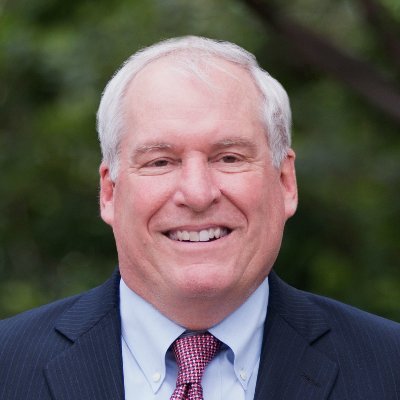
Eric Rosengren
@EricSRosengren
Followers
5K
Following
3
Media
58
Statuses
421
Former president and CEO of @BostonFed. Economist with interest in monetary policy, financial stability, and financial regulation. Visiting Scholar MIT
Joined June 2021
Contractionary tariff policy forces the Fed to lower r to moderate the impact on the economy. By redistributing taxes from wealthy to less wealthy by cutting income taxes and raising tariff taxes, it causes lower income consumers that consume more of their income to cut back
0
0
9
The economy has weakened primarily because consumers have reduced spending. Consumption grew 3.9 percent in the second half of 2024 but only 1.1 percent in the the first half of 2025. Low/moderate income consumers realize the tariff tax is a tax on them and reduced spending.
3
1
9
A less independent Fed will introduce a potential higher inflation risk premium into long bonds, as investors presume interest rate cuts are to achieve goals other than that mandated by Congress, stable prices and full employment. Implies lower short rates but higher long rates.
4
1
27
I can think of no better way to show you are not an independent monetary policy maker than continuing to hold a policy position in the federal government at the same time.
4
8
39
You hear concerns that monetary policy is too restrictive. The fed sets r, but it is financial conditions that should matter. The Chicago index for financial conditions, where a positive is restrictive, show policy is less restrictive recently and not very restrictive overall
3
7
24
My recent interview with BBC on the potential costs of the fed losing central bank independence You can download a copy here https://t.co/52MiUUCkho
1
0
7
The speech is likely to reinforce changes to be made in the framework document. That will likely reflect the need to change many of the changes added the last time, that are now out of sink with consistent misses of the two percent inflation target from above rather than below
2
2
7
I suspect that the Jackson Hole speech by the chair will be reflective of his time as chair, a defense of the dual mandate, and the success most developed countries have had with an independent central bank. I expect markets will not get the specificity they hope on September r
10
10
50
The Committee recently focused on supercore - services minus shelter. It is 3.2 percent in the most recent report and has risen since April. Oil price declines have kept the headline low There are administration advocates arguing for 50 bp, nothing in the data justifies 50.
0
0
10
There is only a weak case for easing in September. Core CPI rose to 3.1 percent, well above target. Core service prices are rising. Unemployment is at 4.2 the committees target. The weak case rides on payroll - most affected by immigration. Forecast prob of recession is low.
2
7
43
Labor supply is an important component of how fast the economy can grow over time. Roughly 19 percent of the labor force is foreign-born. Those celebrating negative net migration may not be as happy as the consequences for GDP growth are revealed.
5
28
65
Fed fund futures shows higher liklihood of Sept rate hike (roughly double yesterday's to 75%), Likely an over-reaction to payroll revisions. Payroll revisions in sectors hurt by federal policies - not yet clearly a broader downturn. More data will provide more clarity
1
2
7
Note for other countries US policies impact is clearer. Tariffs and weaker dollar weaken their economies and reduce their inflation. They should respond to external shock by reducing rates. US policy less clear. Stagflation depends on relative size of impact from policy shock
0
1
8
Fed was correct to wait. Now seeing early impact of policy shocks. Need more data on relative size of impact. Challenging because both inflation data and payroll data likely to get worse, but relative magnitudes highly uncertain. Also, shock from policies could change.
7
15
84
Average hourly earnings was also up. Now 3.9 percent over last year. If wages start to respond to tariff shock Fed will be concerned that tariffs price impact may be perpetuated. Still in early rounds of seeing full impact of deportations, tariffs, gov layoffs.
3
5
18
How should fed react to stagflationary shock - slower employment and higher inflation - Unemployment is still 4.2 percent while core pce is 2.8 percent. Inflation further from target. Wait until next employment/inflation reports so no signal until Jackson Hole.
1
4
9
Tariff and other policies hurting jobs. Laying off fed gov. since May -21, tariffs distorting manufacturing since May -26, Deporting labor construction of buildings high immigrant since May -5. Employment is down in areas where gov policy is distorting labor markets.
1
3
11
The tariff shock is showing through the data now. A tariff shock over time will raise prices and reduce GDP and employment. First prices. Furnishing and durable household equipment was up 1.3 % M/M. Durable goods up 0.5% M/M. This is where tariffs likely shows up in PCE.
0
6
15
The tax cut was partly predicated on a productivity boom with tariff protection, lower tax rates on high income, and deregulation. So far domestic production is lackluster, and if the first quarter is any indication, the lack of growth spells trouble for deficit projections.
0
1
8
A stated goal of the tariff policy is to reshore manufacturing jobs. However, to date manufacturing employment is not rebounding. The impact of tariffs on domestic manufacturing is quite uncertain - under current implementation Japanese autos may benefit more than US auto co.
0
0
9



